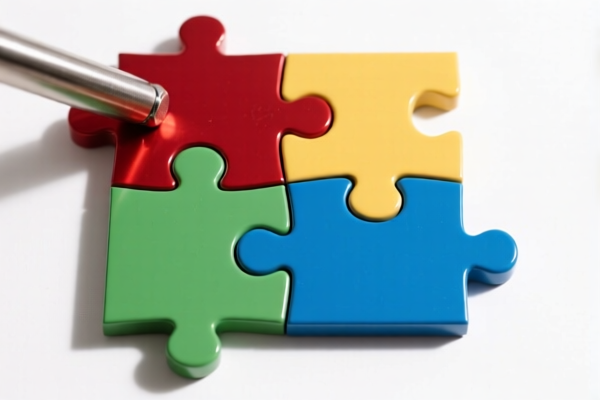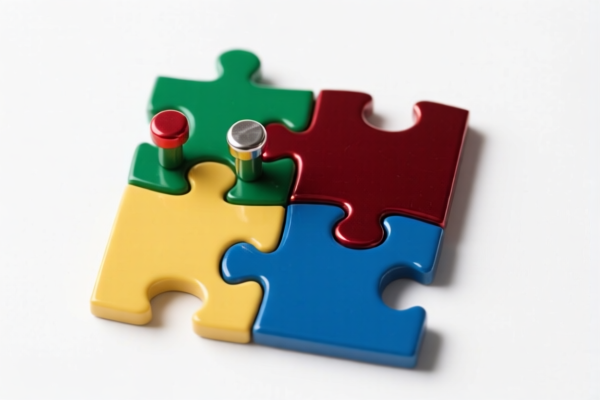| HS Code | Official Doc | Tariff Rate | Origin | Destination | Effective Date |
|---|---|---|---|---|---|
| 9503000071 | Doc | 30.0% | CN | US | 2025-05-12 |
| 9503000073 | Doc | 30.0% | CN | US | 2025-05-12 |
| 8505110090 | Doc | 32.1% | CN | US | 2025-05-12 |
| 8505193000 | Doc | 59.9% | CN | US | 2025-05-12 |
| 8543708800 | Doc | 30.0% | CN | US | 2025-05-12 |
| 8543908885 | Doc | 80.0% | CN | US | 2025-05-12 |




Magnetic Fractional Puzzle
A magnetic fractional puzzle is an educational tool designed to visually represent and manipulate fractions. These puzzles typically consist of color-coded, magnetic pieces representing different fractional parts of a whole, allowing for hands-on learning of fraction concepts.
Material:
- Magnets: The core component, embedded within each puzzle piece to facilitate attachment to a magnetic surface (usually a whiteboard or dedicated puzzle board). Ferrite magnets are common due to cost-effectiveness.
- Plastic or Foam: Pieces are generally constructed from durable plastic or lightweight foam for ease of handling and visual clarity.
- Color Coding: Different colors represent different fractional values (e.g., halves, thirds, fourths, etc.). Color consistency is important for intuitive understanding.
- Cardboard/Plastic Storage Box: Often included for organization and safekeeping of the pieces.
Purpose:
- Fraction Recognition: To help learners identify and name common fractions.
- Fraction Comparison: To visually demonstrate the relative sizes of different fractions.
- Fraction Equivalence: To illustrate how different fractions can represent the same amount (e.g., 1/2 = 2/4).
- Fraction Addition & Subtraction: To physically combine and separate fractional parts, aiding in understanding these operations.
- Fraction Multiplication & Division: More advanced sets can be used to represent these concepts visually.
Function:
The puzzle functions by allowing users to:
- Assemble a Whole: Pieces are combined to form a complete unit, representing '1'.
- Decompose a Whole: A whole is broken down into its fractional components.
- Compare Sizes: Pieces of different fractions are placed side-by-side to visually compare their magnitudes.
- Find Equivalents: Users can experiment with different combinations of pieces to discover equivalent fractions.
- Perform Operations: Pieces are added, subtracted, multiplied, or divided to demonstrate these mathematical concepts.
Usage Scenarios:
- Classroom Instruction: Teachers use the puzzles as a hands-on tool to introduce and reinforce fraction concepts.
- Home Learning: Parents use the puzzles to supplement their child's math education.
- Special Education: The visual and tactile nature of the puzzles can be particularly beneficial for students with learning disabilities.
- Tutoring: Tutors utilize the puzzles to provide individualized instruction.
Common Types:
- Circle Fraction Puzzles: The whole is represented by a circle, divided into fractional segments. These are common for illustrating part-whole relationships.
- Square/Rectangular Fraction Puzzles: The whole is represented by a square or rectangle, divided into fractional segments. Useful for demonstrating area and length concepts.
- Fraction Tower/Stair Puzzles: Pieces are designed to stack, visually representing the relative sizes of fractions.
- Fraction Tiles: Similar to square/rectangular puzzles, often made of plastic and used for more complex operations.
- Digital Fraction Puzzles: Software or app-based versions that simulate the functionality of physical puzzles. Often include interactive exercises and assessments.
- Full Sets vs. Specific Fraction Sets: Some sets include fractions from 1/2 to 1/12, while others focus on specific fractions (e.g., halves, fourths, and eighths).
Magnetic fractional puzzles fall under several potential classifications based on their specific characteristics as detailed in the provided documentation.
-
8505110090: This HS code covers Electromagnets; permanent magnets and articles intended to become permanent magnets after magnetization; electromagnetic or permanent magnet chucks, clamps and similar holding devices; electromagnetic couplings, clutches and brakes; electromagnetic lifting heads; parts thereof: Permanent magnets and articles intended to become permanent magnets after magnetization: Of metal Other. This is applicable if the puzzle utilizes metal permanent magnets as a core component. The two-digit sections represent: Chapter 85 (Electrical machines and apparatus); Heading 05 (Electromagnets); Subheading 11 (Permanent magnets and articles intended to become permanent magnets after magnetization); and further specifies "Of metal Other".
-
8505193000: This HS code covers Electromagnets; permanent magnets and articles intended to become permanent magnets after magnetization; electromagnetic or permanent magnet chucks, clamps and similar holding devices; electromagnetic couplings, clutches and brakes; electromagnetic lifting heads; parts thereof: Permanent magnets and articles intended to become permanent magnets after magnetization: Other: Other. This is applicable if the puzzle utilizes permanent magnets not specifically of metal, or if the categorization of the metal is unclear. The two-digit sections represent: Chapter 85 (Electrical machines and apparatus); Heading 05 (Electromagnets); Subheading 19 (Permanent magnets and articles intended to become permanent magnets after magnetization); and further specifies "Other: Other".
-
9503000071: This HS code covers Tricycles, scooters, pedal cars and similar wheeled toys; dollsʼ carriages; dolls, other toys; reduced-scale (“scaleˮ) models and similar recreational models, working or not; puzzles of all kinds; parts and accessories thereof “Childrenʼs productsˮ as defined in 15 U.S.C. § 2052: Other: Labeled or determined by importer as intended for use by persons: Under 3 years of age. This is applicable if the puzzle is classified as a toy intended for children under 3 years of age. The two-digit sections represent: Chapter 95 (Toys, games and sports equipment); Heading 03 (Tricycles, scooters, pedal cars and similar wheeled toys; dollsʼ carriages; dolls, other toys; reduced-scale (“scaleˮ) models and similar recreational models, working or not; puzzles of all kinds; parts and accessories thereof); and further specifies “Children’s products” intended for use by persons under 3 years of age.
-
9503000073: This HS code covers Tricycles, scooters, pedal cars and similar wheeled toys; dollsʼ carriages; dolls, other toys; reduced-scale (“scaleˮ) models and similar recreational models, working or not; puzzles of all kinds; parts and accessories thereof “Childrenʼs productsˮ as defined in 15 U.S.C. § 2052: Other: Labeled or determined by importer as intended for use by persons: 3 to 12 years of age. This is applicable if the puzzle is classified as a toy intended for children between 3 and 12 years of age. The two-digit sections represent: Chapter 95 (Toys, games and sports equipment); Heading 03 (Tricycles, scooters, pedal cars and similar wheeled toys; dollsʼ carriages; dolls, other toys; reduced-scale (“scaleˮ) models and similar recreational models, working or not; puzzles of all kinds; parts and accessories thereof); and further specifies “Children’s products” intended for use by persons between 3 and 12 years of age.
Regarding HS codes 9503000071 and 9503000073, please note that these are specifically defined as “Children’s products” as defined in 15 U.S.C. § 2052. The importer must determine the intended age range for the puzzle to correctly classify it. Both HS codes currently have a total tax rate of 30.0%.
Customer Reviews
No reviews yet.